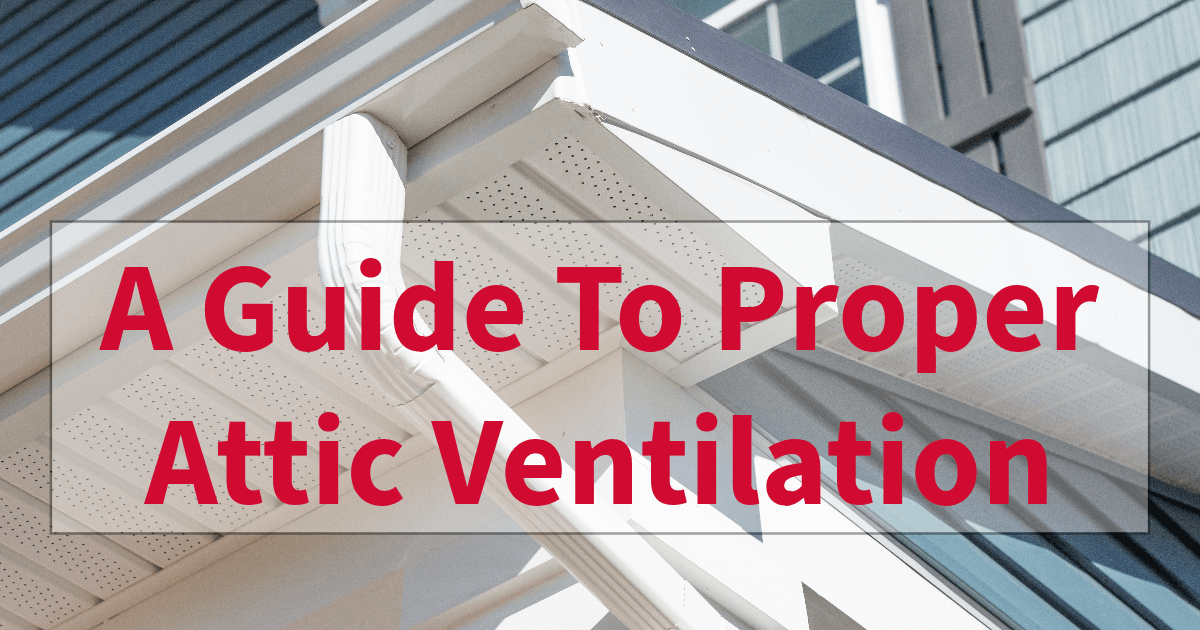The Importance and Mechanics of Attic Ventilation: A Comprehensive Guide
Your attic may not be a space you think about often, but it plays a crucial role in maintaining the comfort and energy efficiency of your home. One of the most overlooked yet important aspects of the attic is its ventilation. In this blog post, we will delve into the significance of attic ventilation in both summer and winter, explain how attic ventilation works, and compare static attic ventilation to power-assisted ventilation.
Click here to read EPA recommendations on attic ventilation>
Attic Ventilation in Summer and Winter
Summer
During the hot summer months, your attic can become a heat trap. Without proper ventilation, this heat can infiltrate your living spaces, making your air conditioning system work harder. This shortens the lifespan of your cooling system and increases the cost of cooling your home in summer. The average cost to replace a central air conditioning system, depending on the size of the home, ranges from $12,000 to $25,000.
Additionally, excessive attic heat can reduce the life span of your roof. The heat can cause damage to your roof including shrinkage and cracks in your roof shingles ultimately requiring a roof replacement or many ongoing repairs. The average cost to replace a roof in Illinois, depending on the size of the home ranges from $6,000 to $28,000.
Proper attic ventilation allows hot air to escape, thereby reducing the temperature in the attic and, subsequently, the entire house while reducing the demand on your air conditioning system and damaging your roof.
Winter
In winter, a poorly ventilated attic can lead to various problems such as ice dams on your roof and condensation inside the attic, which can cause wood rot and mold. By facilitating the flow of cold air, proper attic ventilation helps to keep the attic’s temperature close to the outside temperature, reducing the risk of these costly issues.
How Attic Ventilation Works
Attic ventilation operates on the principle of natural air flow, where hot air rises and cold air sinks. Ventilation systems often consist of intake vents placed along the soffits (the underside of your roof’s overhang) and exhaust vents located near the peak of the roof. This setup allows cool air to enter through the intake vents, push the hot air upwards, and finally escape through the exhaust vents. The flow of air keeps the attic’s temperature regulated, ensuring that it doesn’t become too hot in summer or too cold in winter.
Static Attic Ventilation vs. Power-Assisted Attic Ventilation
Static Ventilation
Static attic ventilation relies solely on natural airflow and does not use any mechanical devices. It is generally easier and less expensive to install but may not be sufficient for larger or more complex attic spaces. Static ventilation systems include options such as ridge vents, gable vents, and soffit vents.
Power-Assisted Ventilation
In power-assisted attic ventilation, a powered attic fan is installed to actively draw air out of the attic. This accelerates the air exchange rate, making the system more effective in regulating the attic’s temperature. While power-assisted systems are usually more effective, they also require electricity, which could slightly increase your energy bills.
Attic ventilation is not a one-size-fits-all solution
The best system for your home will depend on various factors such as your attic’s size, your local climate, and your specific needs. Regardless, proper attic ventilation is crucial for maintaining a comfortable living environment and prolonging the lifespan of your roof and other structural components. So, if you haven’t already, it may be time to consider upgrading or installing an attic ventilation system.
By understanding the importance of attic ventilation in both summer and winter, how it works, and the differences between static and power-assisted systems, you can make an informed decision that will allow you to maximize energy efficiency, protect the structural integrity of your home, and the longevity of your HVAC units.
ATTIC AIR
We are Attic Air – we offer attic ventilation and insulation services in the Chicago Suburbs. Click here to learn more about our attic ventilation services>
Call us today at 630.830.3870 to schedule your free attic ventilation assessment!


